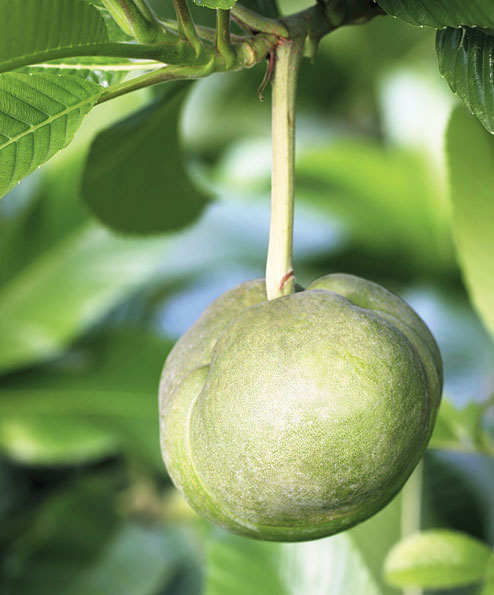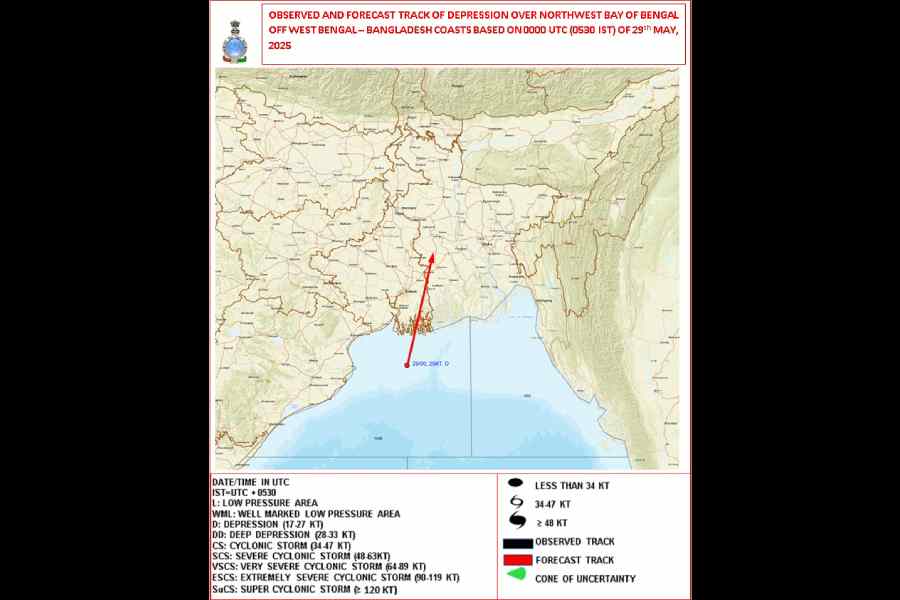Chalta

Chalta may be a common fruit tree in the parks of Salt Lake, but in the wild, it is a favourite snack of elephants. In fact, that is why it is known in English as Elephant Apple.
The tree, that grows rampantly in Bengal, Bihar and Assam, was scientifically named Dillenia indica by the Swedish botanist Linnaeus. The word “Dillenia” was to commemorate Johann Jacob Dillenius, a German botanist and professor at Oxford University and the word “indica” means it is a native of India.
The Chalta is an erect evergreen tree with a dense rounded crown. It has spreading branches and handsome green foliage. A full-grown tree reaches a height of 12m to 15m, with leaves at the end of branches. The leaves themselves grow to about 15 to 35cm in length and 5cm to 13cm in breadth, pointed at the apex. The leaf stalk is channelled and the corrugated leaf surface has impressed veins running parallel to one another. They terminate in the toothed margins, giving the leaves a deeply fluted surface.
Flowers are large, between 10 and 15cm in diameter, fragrant with five white petals and numerous yellow stamens. The Chalta fruit is hard, between seven and 12cm in diameter and consisting five closely-fitting sepals. The fruit encloses numerous seeds embedded in the pulp.
Fruits of the Chalta ripen in October and continue to fall to the ground during winter. In the jungle, the fallen fruits decay quickly and the pulp is sometimes eaten by white ants, who then fill up the shell with earth. That’s how the seeds germinate.
The thickened sepals are bitter-sour in taste and used in Indian cuisine to make curries, jams and jellies. In Bengal they are extensively used in dal and fish preparations.
The Chalta is easily propagated from fresh seeds sown in monsoon. It grows in frost-free zones and flourishes in moist locations.
Tamarind

The name Tamarind comes from the Persian term “Tamar-i-Hind”, meaning Indian Date. All though that makes it sound like the fruit originated in India, it was actually introduced to the region by Arab traders who had carried it from tropical Africa. But this was very long ago that it is virtually considered indigenous. And it was called dates by the Persians as its pulp resembles preserved dates.
The Tamarind is a large handsome, long-lived tree with a squat trunk. It has drooping branches and a high shady crown of feathery foliage. Scientifically it is known as tamarindus indica and belongs to the Caesalpinaceae family.
The Tamarind is a common tree in any frost-free zone of the subcontinent and grows in the forests of central and south India, all though it is not truly wild here. In Salt Lake it is commonly found in the parks and there is a variety known as “Sweet Tamarind” that grows in containers too.
An evergreen tree with feathery leaves, the Tamarind has 10 to 20 pairs of leaflets reaching up to a height of 30m with girth of about 5m. In Sri Lanka, however, there is one particular Tamarind tree that has a girth of 12.8m. The bark is dark grey, covered with longitudinal fissures and horizontal cracks. Young leaves are light green; the older ones lose their brilliance, but remains very pleasantly green. The leaves tend to close at night.
Flowers are small, about half an inch long, variegated yellow and red, arranged in loose clusters among the leaves. Flowers appear in abundance between April and June and the ground beneath the tree gets covered with colourful petals that fall off.
The fruit, which is called pod, is curved, irregularly swollen, brown in colour, and contains several seeds immersed in fleshy juicy fibrous pulp. It matures when the flesh gets coloured brown or reddish brown and the ripe fruit is considered more palatable then as it becomes sweeter and less sour. The pulp of the fruit is a favourite ingredient for making condiments and is used in general cooking and chutnies.
Tender leaves and flowers are also edible. The pulp of the Tamarind is a brilliant polish for brass instruments and utensils, all thought the items should be washed and dried and dried after rubbing with the pulp.
The timber of Tamarind is extremely hard and heavy and so used for making agricultural implements, tool handles, wheels, mallets, rice pounders and the like. Seeds yield a cheap substitute for starch on cotton yarn and jute fabrics. The strong and supple branches of the Tamarind are not affected by wind and it is known to be a hurricane-resistant tree.
The Tamarind is propagated by seeds, grafts and budding. Seedling plants start yielding in eight to 10 years whereas graft and budding plants in four to five years. One should plant in previously dug pits of size 1mx1mx1m filled with 20kg of Farm Yard Manure (FYM) per pit. This should be done during the monsoon months.
To be continued










